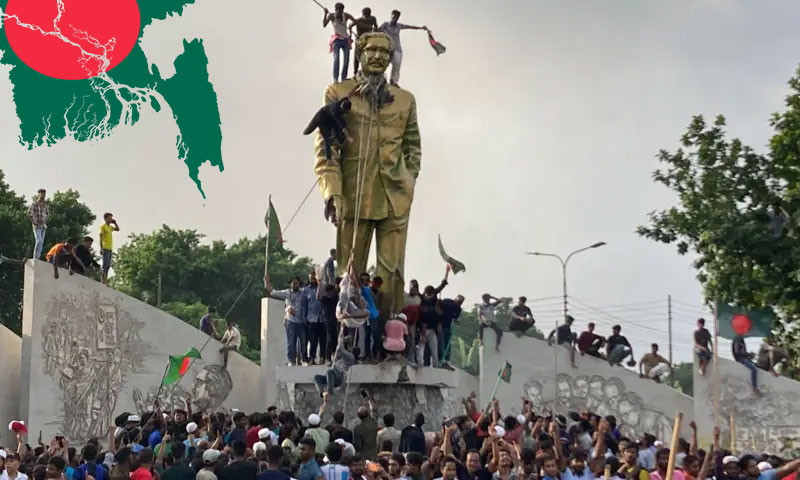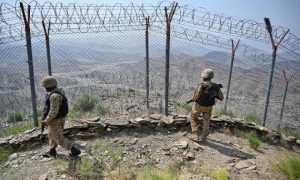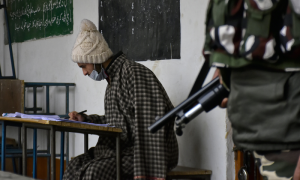Ripples in Bangladesh are very strong. It is not easy to predict the future unfolding at this stage. For many, the rapid spread of student protests is quite meaningful. It was not expected that protest against reinstatement of controversial job quota would eventually lead to ouster of Sheikh Hasina Wajid. The swift culmination of 15 years long rule in the form of an unceremonious resignation is being viewed through different lenses.
As expected, India was the first destination of Sheikh Hasina Wajid after fleeing from Bangladesh. She is still there and reportedly striving to find a decent shelter in exile to properly dress up her political wounds. Her escape-style departure to Agartala makes perfect sense due to the strong Indian influence on the politics of the Awami League.
Loud victory jubilation in the camp of protesting students is also understandable, however, the degree of violence observed in their campaign disclosed a disturbing side of the whole episode. Surprisingly students started dictating some important action after successfully dismantling the Hasina Wajid led government of the Awami League.
First students demanded immediate dissolution of parliament and a lead role for Dr Younus in interim or caretaker setup. Both these demands were swiftly accepted. Thereafter, protesting students demanded resignation from the Chief Justice. This demand was also fulfilled. These huge successes reflect the dominance of the student movement in the new ruling regime in Bangladesh.
The release of former PM Khalida Zia along with numerous imprisoned leaders of BNP and JI immediately after the departure of Hasina Wajid further supplemented the optics of the anti-Awami League buildup. It seems that prolonged suppression and a suffocated political environment brought the public onto the roads and streets against Hasina’s tyrant rule.
Having no disregard for this obvious factor, it is also pertinent to carefully analyze the continuation of violence after the resignation of Hasina, the swift formulation of interim setup under Dr Younus and the appointment of a new chief justice. Awami League is complaining about violent attacks on party leaders, supporters and various premises.
The demolition of the statues of Bangla Bandhu Shaikh Mujib Ur Rehman and the destruction of the liberation war museum have been reported in international media. Hatred with Awami League’s dictatorial rule has taken the legacy of Shaikh Mujib into the fold for many understandable reasons.
Being a political heir of Shaikh Mujib, talented daughter Hasina adopted the same venomous course which led to the assassination of Bangla Bandhu with almost the entire family in the hands of rebellion group of army officers. Almost 24 years after the partition of sub-continent, Mujib’s Awami League parted ways from two nation theory and opted to exist as Bangladesh in 1971.
This transformation took place with close support and invasion of Indian army. Awami League’s government could only survive hardly for four years due to the parallel mafia-style rule of Mukti Bahini. After the assassination of Mujib, Bangladesh went under military rule and witnessed many phases of political turbulence.
However, Hasina managed to revive the legacy of Mujib in 2009 which concluded unceremoniously with protestors demolishing the liberation memorial monuments in 2024. The President of Bangladesh cancelled the holiday on the assassination anniversary of founding father Shaikh Mujib earlier scheduled as a national event on 15th August.
It is apparent that after taking refuge from two nation theory in 1971, now Bangladesh is getting rid of the hateful legacy of the Awami League as well which revolved around over exaggerated stories of pre-71 exploitation, bulldozing of political dissent with violence and pro-Indian policies. This deviation from the traditional anti-Pakistan narrative is pinching India where Awami League under Hasina Wajid has always been considered an asset in the region.
Though some optimistic quarters interpret growing anti-Awami League sentiments as sign of reviving positivity towards Pakistan, however, geographical hurdles and strong Bengali nationalism indicates a different unfolding. Saner quarters in Bangladesh have understood how India exploited Bengali nationalism to settle the score of the 1947 partition. Indian official stance on dismantling Hasina Wajid’s regime is cautiously calculated.

However, numerous Indian social media platforms have started threatening Bangladesh on the pretext of attacks on Hindus during anti-Awami League protests. These Indian accounts are meaningfully warning Bangladesh of serious consequences including balkanization. Why Bengali nationalism is irking India now once the same very spirit was pitched through Mujib led Awami League to dent the two-nation theory in East Pakistan.
Interestingly, a dubious Indian news platform released the statement of Hasina Wajid in which she blamed the USA for her ouster amid refusal to establish a base on an island. Later, Hasina Wajid’s son stationed in the USA declared this statement fake. Some pieces of this sinister mosaic are still missing.
However, it is obvious that strong Bengali nationalism is posing a threat to Hindu nationalism which it once posed to two nation theory. How India would respond to any call for the unification of Bengal on the basis of common language, culture, traditions and arts? Surely, this version of Bengali nationalism would be a nightmare for India. Anxiety in New Delhi on the ouster of Hasina and the demolition of liberation war monuments in Bangladesh is quite understandable.























